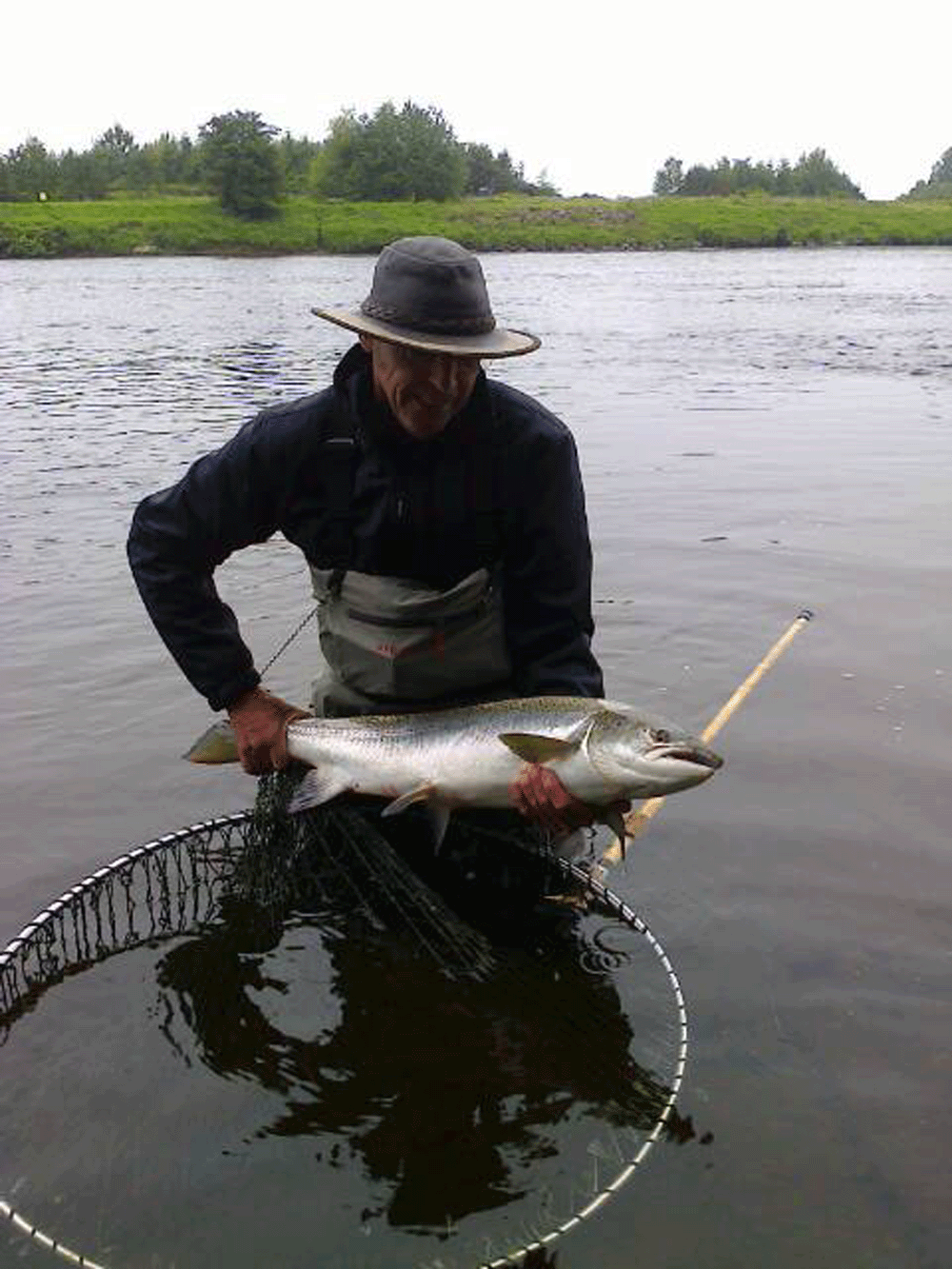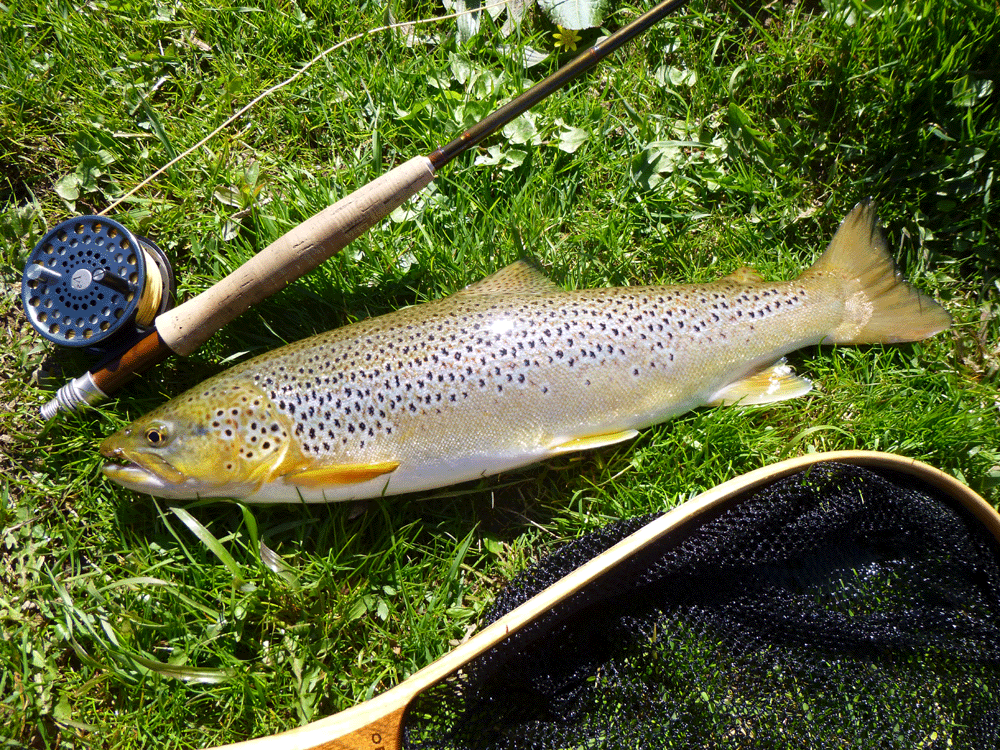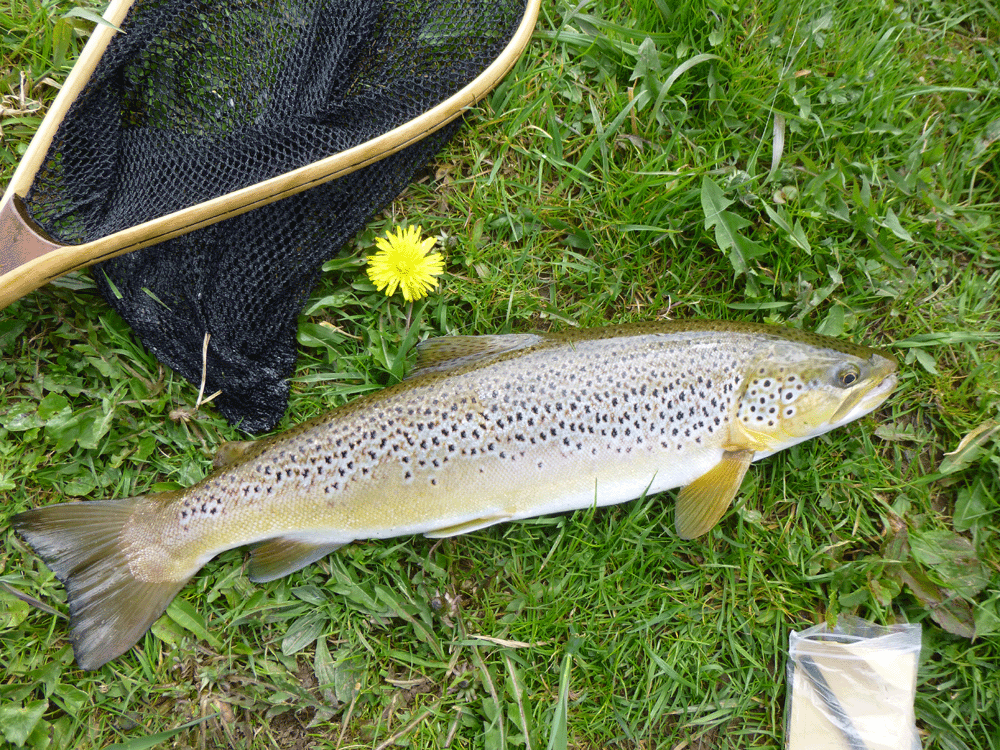SCOTLAND’S most fortunate fish was caught and released three times in one week by the same angler.
The brown trout was hauled in on the same stretch of the River Tweed by Jim Cairns.
On each of the three occasions, Jim took a picture of the 3lb fish and released it back into the Tweed near Coldstream, Scottish Borders.
The amazing triple catch – made in April 2014 – has now been scientifically confirmed as the same fish thanks to remarkable new computer software.

The program analyses the pattern of spots unique to each brown trout and is able with certainty to tell one individual from another.
The system was develop initially to spot individual sharks but is now being used to identify and track fresh water fish in Scotland.
Jim, who works with the Coldstream and District Angling Association, has spent the past three years trialling the new software.
The results of the trial have now been published and they reveal the remarkable triple escape of the brown trout, known only as “Fish A”.

‘Fish A’, was first caught between Coldstream and Carham back on Tuesday April 14, for the second time on Friday, April 18 and finally on Wednesday April 23.
It is thought the five-year-old fish, which was 51cm long, was either “too brave” or “too naive” to learn from its mistakes – resulting in its double recapture.
Kenny Galt, trout and grayling biologist with the River Tweed Commission, said: “I would think it’s quite rare for a fish to be caught three times by the same person in just a week.
“Bigger fish can sometimes be a bit brave, and this was a large trout, which may be why it was caught so often.
“It’s also possible the fish could be quite naive, though you wouldn’t expect that from a five-year-old.
“Compared to the rest of the samples this was very unusual. No other fish were caught this many times.”
Jim uses ‘I35’ pattern recognition software to document his catches.

The software, usually used with much larger fish, is able to pinpoint precise differences in the complex patterns found on gill covers just using a single photograph.
The markings are so elaborate that no two fish are the same – and the spotting is even different on either side of the same animal.
The River Tweed commission is now urging anglers to take photos of both sides of any trout that they catch, so that the animals can be logged in a database.
Kenny added: “It is still in the trailing stage but it seems to be helping us know how often individual fish are caught. Hopefully over time we will be able to track their movement.”
Until now, there was no practical way of recording the fish as traditional external tags are a snag risk and not suited for trout which like to squeeze under tree roots and overhung banks.
Last year, a statutory ban was put in place for any salmon caught on the Tweed, meaning that anglers who failed to put them back in the water faced prosecution.
The new measure came into force after figures showed catches had fallen by over half compared with previous years.
